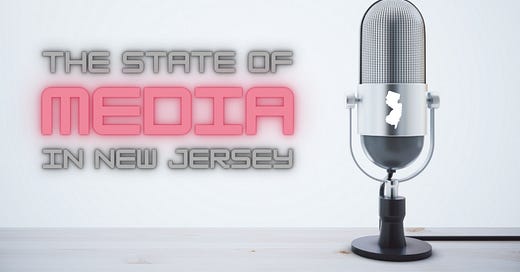Podcast series: 2021 State of the Media in New Jersey
Journalism at the national level has been under attack over the last four years, and the business model that once supported the industry…
Journalism at the national level has been under attack over the last four years, and the business model that once supported the industry has been crumbling for more than a decade.
On top of that, last year was particularly turbulent as a pandemic raged (and continues to rage) across the globe. Throw in a near-economic collapse, months of racial and political uprisings, the 2020 Census, and a divisive election into that mix and it’s easy to understand why many in the media are unsure of what the future holds — and that’s just at the national level.
Local media of all shapes and sizes are facing the same issues mentioned above, but often without the decades of institutional legitimacy and financial reserves that larger publications enjoy. That goes double for ethnic and community media outlets that often serve communities of color or non-English speaking audiences.
With all that in mind, we decided to gather several New Jersey publishers and journalists for small-group conversations and ask them about the landscape here: What is the state of media in the Garden State?
We hired Alexandra Hill of WBGO to host the conversations, set up a few Zoom sessions, and recorded them for your listening pleasure. Today we’re happy to release them in a four-part series we’re calling 2021 State of the Media in New Jersey.
Local independent media
For our conversation with local independent media, we spoke with Clyde Hughes of Front Runner New Jersey, Krystal Knapp of Planet Princeton, Tehsuan Glover of The Newark Times and Jackie Lieberman of TAPinto Westfield.
The main takeaway from this session, somewhat unsurprisingly, is that the current demand for accurate and reliable local news is strong, but the revenue to support it is increasingly hard to come by. Many local outlets saw drastic reductions in ad revenue due to the pandemic, causing more layoffs, furloughs and budget cuts in the newsroom. Amid all this, reporters are forced to deal with a seemingly endless firehose of new and changing information while also competing with any number of bad actors and sources of mis- and disinformation.
Ethnic and community media
Our conversation with ethnic and community media organizations in New Jersey included Jongwon Lee of The Korea Daily, Kleibeel Marcano of Reporte Hispano, Lazslo Bartus of Amerikai Népszava, Kaushik Amin of Gujarat Darpan, Marivir Montebon of OSM! Magazine, and Raymond Tyler of The Light on WTTH 96.1 FM.
One of the main takeaways from this session was that many ethnic and community media outlets simply don’t receive the kind of resources and support that they need to properly meet some of the critical information needs that their respective communities have. The pandemic has made this worse. Without access to experts or accurate information in the language that many in their community speak, it becomes nearly impossible to sufficiently cover COVID-19-related stories.
Statewide media
For our conversation with statewide media, we spoke with John Mooney of NJ Spotlight News, Kevin Whitmer of NJ Advance Media, Hollis Towns and Candace Mitchell of Gannett New Jersey, Ken Schlager of New Jersey Monthly and Joe Hernandez of WHYY.
Aside from common revenue issues, this panel focused on some of the less obvious problems that have arisen due to the pandemic over the last year. That includes low staff morale and adjusting to a completely remote work life, as well as how to build, maintain, and improve the relationships between newsrooms and the communities in the midst of a lockdown. Live events, for example, had been a source of revenue for many publications and a crucial part of community engagement. How can newsrooms and journalists preserve those relationships (and that revenue stream) without the ability to gather in person?
Vertical and niche media
Our cohort of vertical and niche media organizations included Jay Lustig of NJArts.net, Esther Surden of NJ Tech Weekly, Patrick Wall of Chalkbeat, Meg McGuire of Delaware Currents, and Tom Bergeron of ROI-NJ.
In a crisis, vertical and niche media are often among the first to see drops in revenue. In a pandemic, where people are forced to stay inside their homes, that effect is compounded for publications that cover topics such as the arts or the outdoors — especially if universities and theaters are some of your largest advertisers. At the same time, interest in technology, education, business, the arts and the environment seem to be at an all-time high. Our guests discussed how they’ve been making the case to their readers that the work they do to provide the coverage they love does in fact cost money to produce.
Joe Amditis is the associate director of the Center for Cooperative Media at Montclair State University. Contact him at amditisj@montclair.edu or on Twitter at @jsamditis.
About the Center for Cooperative Media: The Center is a grant-funded program of the School of Communication and Media at Montclair State University. Its mission is to grow and strengthen local journalism, and in doing so serve New Jersey residents. The Center is supported with funding from Montclair State University, John S. and James L. Knight Foundation, the Geraldine R. Dodge Foundation, Democracy Fund, the New Jersey Local News Lab (a partnership of the Geraldine R. Dodge Foundation, Democracy Fund, and Community Foundation of New Jersey), and the Abrams Foundation. For more information, visit CenterforCooperativeMedia.org.




